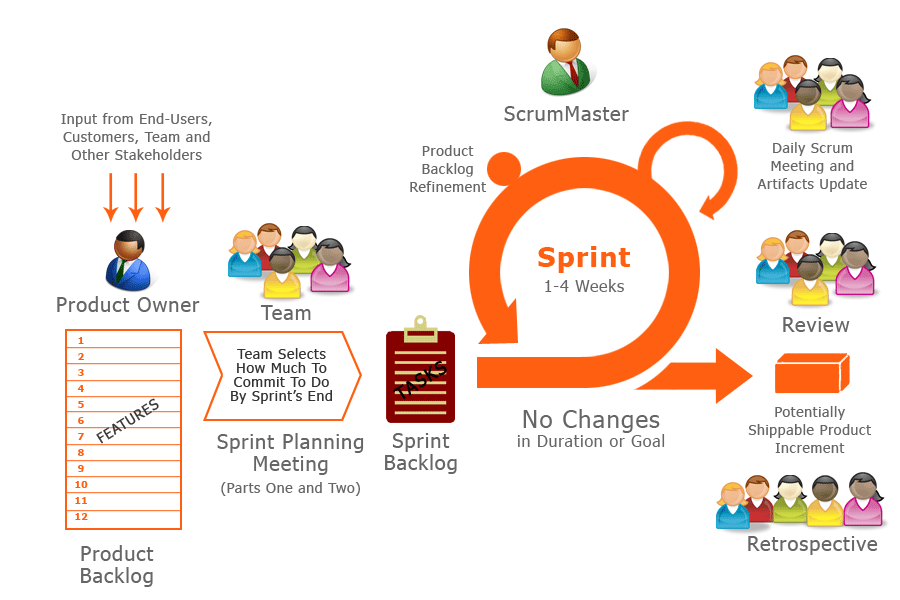Agile Project Management method was originally developed by software engineers, for engineers.
But recently, Agile use has spread to a broad spectrum of other disciplines.
In fact, over 10% of Agile projects are in the advertising and marketing industry.
A profession that is as different from engineering as you get. In this post, we will explain several scenarios where the Agile method is a suitable project management approach for your project.
What is Agile Project Management?
The agile project management method is based on the 12 principles published in the Agile Manifesto written in 2003 by a group of software scientists.
In Agile the project is divided into Short iterations called Sprints.
During each iteration, the team develops a working system, tests it completely and releases it.
The released product could be shipped to the customer or could be only an internal release.
In the next iteration, the team enhances the previous work and releases a new product.
This process continues until the product or the service has all the features envisioned in the original product specification.
The Agile framework is based on small teams, working quickly to create working products or services based on continuous customer feedback.
Examples of Agile methods include Scrum, Kanban, and Lean Software Development.

Image Source: Dave Gray
Five Reasons for Considering Agile Project Management
Based on our experience working on more than 200 projects and the research done in the project management field, here are five reasons why product owners typically select Agile over the Waterfall methodology.
Improved Product Development
Products can be released before all the functionality is complete, thereby increasing the speed to market.
Quality is built into the Agile process: testing and verification of each module are an integral part of the Agile methodology and there is no need to delay testing until the end of the project when all modules are complete.
By fixing problems as they occur, Agile improves product quality and accelerates the product development cycle.
Increased flexibility to change priorities and re-set expectations
With Agile methodologies, a project is divided into small sprints of 2 to 6 weeks duration.
At the end of each sprint, there is visibility into project progress and the decision can be made to modify or rethink priorities and scope.
Improved productivity and motivation
Working on tasks of short duration makes it much easier for the developers to focus on tasks on hand and for management to measure the project’s progress.
The team becomes more motivated to deliver products in the near-term and this increased level of focus on product delivery improves the product’s quality and team’s productivity.
Enhanced project visibility and predictability
Because milestones are frequent, if the team is not meeting its schedule, it quickly becomes apparent to the team and management. In agile, there is a predictable rhythm to deliverable releases.
The early warning signs coming from a frequent deliverable schedule reduces the overall project risk. When a project is flagged, it can be re-calibrated, changed or if needed stopped.
With the Waterfall method, the delivery schedules can span several months to even many years and a miscalculation in one part of a complex project can go unnoticed until it is too late.
Improved organizational alignment. In Waterfall projects, we see different groups within the organization work independently from other groups.
This work arrangement can lead to a disconnect between the business and development groups within the organization.
Because the customer and the business unit have a more active role in the Agile process, there is more of a collaboration between development and business parts of the organization which helps with overall alignment.
We hope you find this article helpful. If you are a practitioner of Agile and would like to leave a comment, please do so below.



Pingback: Introduction to Hybrid project management methodology - Collaboration Corner
Pingback: Introduction to Hybrid project management methodology - Collaboration Corner
Pingback: Introduction to Hybrid project management methodology - Collaboration Corner
Pingback: Introduction to Hybrid project management methodology - Collaboration Corner
Pingback: Introduction to Hybrid project management methodology - Collaboration Corner